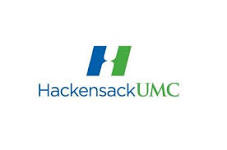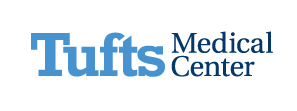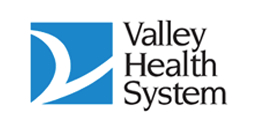Apixaban for the Reduction of Thrombo-Embolism in Patients With Device-Detected Sub-Clinical Atrial Fibrillation
| Status: | Recruiting |
|---|---|
| Conditions: | Atrial Fibrillation, Cardiology, Neurology |
| Therapuetic Areas: | Cardiology / Vascular Diseases, Neurology |
| Healthy: | No |
| Age Range: | 55 - Any |
| Updated: | 4/17/2018 |
| Start Date: | May 2015 |
| End Date: | April 2021 |
| Contact: | Kim Simek |
| Email: | kim.simek@phri.ca |
| Phone: | 905-527-4322 |
This study aims to determine if treatment with apixaban, compared with aspirin, will reduce
the risk of ischemic stroke and systemic embolism in patients with device-detected
sub-clinical atrial fibrillation and additional risk factors for stroke.
the risk of ischemic stroke and systemic embolism in patients with device-detected
sub-clinical atrial fibrillation and additional risk factors for stroke.
Device-detected sub-clinical atrial fibrillation (SCAF) is a new disorder that has been
recognized since the availability of implantable devices capable of long term continuous
heart rhythm monitoring. It is characterized by one or more runs of rapid atrial arrhythmia
detected by the device without symptoms and without any clinical atrial fibrillation (AF)
detected by the usual methods, (i.e. electrocardiogram, Holter monitor, etc.). In the ASSERT
trial, SCAF was detected by a pacemaker or implantable cardioverter defibrillator (ICD) in
nearly 40% of patients during 2 and a half years of follow up. The presence of SCAF increased
stroke risk by 2.5-fold (1). The risk of stroke or systemic embolism among patients with SCAF
and a CHADS2 score ≥ 4 was 2.75% per year. Oral anticoagulation is effective and safe for
stroke prevention in patients with clinical atrial fibrillation, but it is unknown if the
same risk benefit ratio exists for anticoagulation therapy in patients with SCAF (2;3). SCAF
differs from clinical AF in being of shorter duration, being asymptomatic, and often have a
more regular rhythm in the right atrium where it is typically detected. Data ASSERT suggest
that the increase in stroke risk with SCAF may be less than the increase with clinical AF.
Therefore opinion leaders have written that the role of oral anticoagulation for the
treatment of SCAF is uncertain and that randomized trials of anticoagulation are needed
(4;5). Recent surveys of pacemaker clinic practice indicate that only 25% of patients with
SCAF are treated with oral anticoagulation (6;7). Thus there is clinical equipoise for a
trial of oral anticoagulation compared to aspirin in higher risk patients with SCAF.
Apixaban is a Factor Xa inhibitor that is an effective and safe anticoagulant. It has been
shown to have an excellent risk benefit profile for stroke prevention in clinical AF (14,
15). It is highly suitable to test if oral anticoagulation therapy will reduce the risk of
stroke or systemic embolism in SCAF.
Patients will be randomized double-blind to receive apixaban or aspirin. Apixaban dose will
be 5 mg twice daily (2.5 mg twice daily if 2 or more of: age > 80, weight ≤ 60 kg or serum
creatinine ≥ 133 mmol/L). Those assigned to aspirin will receive a dose of 81 mg daily. The
study will be event driven and will continue until 248 patients have experienced a primary
outcome event.
recognized since the availability of implantable devices capable of long term continuous
heart rhythm monitoring. It is characterized by one or more runs of rapid atrial arrhythmia
detected by the device without symptoms and without any clinical atrial fibrillation (AF)
detected by the usual methods, (i.e. electrocardiogram, Holter monitor, etc.). In the ASSERT
trial, SCAF was detected by a pacemaker or implantable cardioverter defibrillator (ICD) in
nearly 40% of patients during 2 and a half years of follow up. The presence of SCAF increased
stroke risk by 2.5-fold (1). The risk of stroke or systemic embolism among patients with SCAF
and a CHADS2 score ≥ 4 was 2.75% per year. Oral anticoagulation is effective and safe for
stroke prevention in patients with clinical atrial fibrillation, but it is unknown if the
same risk benefit ratio exists for anticoagulation therapy in patients with SCAF (2;3). SCAF
differs from clinical AF in being of shorter duration, being asymptomatic, and often have a
more regular rhythm in the right atrium where it is typically detected. Data ASSERT suggest
that the increase in stroke risk with SCAF may be less than the increase with clinical AF.
Therefore opinion leaders have written that the role of oral anticoagulation for the
treatment of SCAF is uncertain and that randomized trials of anticoagulation are needed
(4;5). Recent surveys of pacemaker clinic practice indicate that only 25% of patients with
SCAF are treated with oral anticoagulation (6;7). Thus there is clinical equipoise for a
trial of oral anticoagulation compared to aspirin in higher risk patients with SCAF.
Apixaban is a Factor Xa inhibitor that is an effective and safe anticoagulant. It has been
shown to have an excellent risk benefit profile for stroke prevention in clinical AF (14,
15). It is highly suitable to test if oral anticoagulation therapy will reduce the risk of
stroke or systemic embolism in SCAF.
Patients will be randomized double-blind to receive apixaban or aspirin. Apixaban dose will
be 5 mg twice daily (2.5 mg twice daily if 2 or more of: age > 80, weight ≤ 60 kg or serum
creatinine ≥ 133 mmol/L). Those assigned to aspirin will receive a dose of 81 mg daily. The
study will be event driven and will continue until 248 patients have experienced a primary
outcome event.
Inclusion Criteria:
1. Permanent pacemaker or defibrillator (with or without resynchronization) or insertable
cardiac monitor capable of detecting SCAF
2. At least one episode of SCAF ≥ 6 minutes in duration but no single episode > 24 hours
in duration at any time prior to enrollment. Any atrial high rate episode with average
> 175 beats/min will be considered as SCAF. No distinction will be made between atrial
fibrillation and atrial flutter. SCAF requires electrogram confirmation (at least one
episode) unless ≥ 6 hours in duration.
3. Age ≥ 55 years
4. Risk Factor(s) for Stroke:
Previous stroke, TIA or systemic arterial embolism OR Age at least 75 OR Age 65-74 with at
least 2 other risk factors OR Age 55-64 with at least 3 other risk factors
Other risk factors are:
- hypertension
- CHF
- diabetes
- vascular disease (i.e. CAD, PAD or Aortic Plaque)
- female
Exclusion Criteria:
1. Clinical atrial fibrillation documented by surface ECG (12 lead ECG, Telemetry,
Holter) lasting ≥ 6 minutes, with or without clinical symptoms
2. Mechanical valve prosthesis, deep vein thrombosis, recent pulmonary embolism or other
condition requiring treatment with an anticoagulant
3. Contra-indication to apixaban or aspirin:
1. Allergy to aspirin or apixaban
2. Severe renal insufficiency (creatinine clearance must be calculated in all
patients; any patient with either a serum creatinine > 2.5 mg/dL [221 µmol/L] or
a calculated creatinine clearance < 25 ml/min is excluded)
3. Serious bleeding in the last 6 months or at high risk of bleeding (this includes,
but is not limited to: prior intracranial hemorrhage, active peptic ulcer
disease, platelet count < 50,000/mm3 or hemoglobin < 10 g/dL, recent stroke
within past 10 days, documented hemorrhagic tendencies or blood dyscrasias)
4. Moderate to severe hepatic impairment
5. Ongoing need for combination therapy with aspirin and clopidogrel (or other
combination of two platelet inhibitors)
6. Meets criteria for requiring lower dose of apixaban AND also has ongoing need for
strong inhibitors of CYP 3A4 or P-glycoprotein (e.g., ketoconazole, itraconazole,
ritonavir or clarithromycin)
7. Ongoing need for strong dual inducers of CYP 3A4 or P-glycoprotein (e.g.,
rifampin, carbamazepine, phenytoin, St. John's wort)
4. Received an investigational drug in the past 30 days
5. Participants considered by the investigator to be unsuitable for the study for any of
the following reasons:
1. Not agreeable for treatment with either aspirin or apixaban or anticipated to
have poor compliance on study drug treatment
2. Unwilling to attend study follow-up visits
3. Life expectancy less than the expected duration of the trial2 years due to
concomitant disease
6. Women who are pregnant, breast-feeding or of child-bearing potential without an
acceptable form of contraception in place (sterilization, hormonal contraceptives,
intrauterine device, barrier methods or abstinence)
We found this trial at
24
sites
Hackensack University Medical Center Hackensack University Medical Center, part of the Hackensack University Health Network,...
Click here to add this to my saved trials
Tufts Medical Center Tufts Medical Center is an internationally-respected academic medical center – a teaching...
Click here to add this to my saved trials
Cleveland Clinic Cleveland Clinic is committed to principles as presented in the United Nations Global...
Click here to add this to my saved trials
Click here to add this to my saved trials
Click here to add this to my saved trials
Click here to add this to my saved trials
Click here to add this to my saved trials
Click here to add this to my saved trials
Click here to add this to my saved trials
Click here to add this to my saved trials
Click here to add this to my saved trials
Click here to add this to my saved trials
Click here to add this to my saved trials
Click here to add this to my saved trials
Click here to add this to my saved trials
Click here to add this to my saved trials
Click here to add this to my saved trials
Click here to add this to my saved trials
Click here to add this to my saved trials
Click here to add this to my saved trials
The Valley Hospital The Valley Hospital is a fully accredited, acute care, not-for-profit hospital serving...
Click here to add this to my saved trials
Click here to add this to my saved trials
Click here to add this to my saved trials



